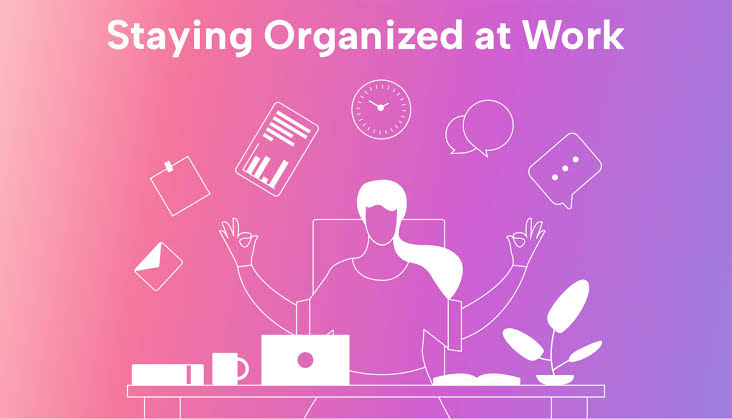In today’s constantly connected and fast-paced world, one of the most valuable skills for achieving consistent productivity is the ability to prioritize tasks effectively. It’s not just about being busy—it’s about being productive in ways that align with your most important goals. As of 2025, with remote work, hybrid schedules, and digital overload becoming the norm, mastering task prioritization is essential for gaining control over your time and avoiding burnout.
Failing to prioritize often leads to a cycle of stress, procrastination, and unaccomplished goals. On the other hand, knowing what truly matters—and acting on it—can help you make measurable progress every day, while still preserving your energy and focus.
Understanding the Importance of Prioritization
Effective task prioritization helps you manage limited resources like time, energy, and attention. Instead of reacting to every notification or request, it allows you to plan intentionally and work smarter.
Here are the key benefits of prioritizing your tasks:
- Reduces overwhelm by breaking work into manageable pieces
- Improves focus by directing attention toward high-impact activities
- Boosts efficiency through structured workflows
- Enhances goal alignment by ensuring your daily actions reflect your larger objectives
- Promotes work-life balance by helping you avoid unnecessary busyness
Categorizing Tasks: Urgent vs. Important
One of the most widely used frameworks for prioritization is the Eisenhower Matrix. This method categorizes tasks into four quadrants:
- Urgent and important – Do these immediately (e.g., client deadline today)
- Important but not urgent – Schedule these to do soon (e.g., planning, learning)
- Urgent but not important – Delegate if possible (e.g., admin requests)
- Neither urgent nor important – Eliminate or postpone (e.g., excessive scrolling)
By applying this system, you train yourself to spend more time on meaningful, long-term value instead of just reacting to emergencies.
Creating a Prioritized Task List
Your daily task list should reflect both urgency and impact. Instead of writing a random to-do list, use these steps to create one that helps you work strategically:
- List all your tasks – Brain-dump everything you need to do
- Assign priority levels – Use A (high), B (medium), C (low) to rank them
- Estimate time and energy – Be realistic about how long each task takes
- Choose your top 3 for the day – Focus on what will make the biggest difference
- Group similar tasks – Batch tasks like emailing, errands, or calls together
This approach helps eliminate decision fatigue and keeps you moving forward without wasting time.
Leveraging Time Blocking and Scheduling
Time blocking is a technique where you assign specific periods in your calendar for focused work. By scheduling your top-priority tasks at peak productivity hours—usually morning or late evening—you ensure that your best energy goes toward what matters most.
Tips for successful time blocking:
- Block time for planning at the start of the week or day
- Reserve your focus hours for complex, creative tasks
- Leave space for breaks and flexibility
- Protect deep work time by turning off notifications
Time blocking also reduces multitasking, which is known to lower efficiency and increase mistakes.
Managing Distractions and Staying Focused
No matter how well you prioritize, productivity suffers without concentration. In 2025, digital distractions like social media, messaging apps, and endless notifications are some of the biggest time thieves.
Use these strategies to maintain focus:
- Set your phone to “Do Not Disturb” during work blocks
- Use website blockers or focus apps to stay on task
- Work in distraction-free environments
- Practice the Pomodoro Technique (25 minutes focused work, 5-minute break)
These tools help reinforce your prioritization by ensuring your attention follows your intention.
Delegating and Saying No
Productivity isn’t just about doing more—it’s about doing the right things. This often means letting go of non-essential tasks or responsibilities. Delegation and boundary-setting are powerful productivity enablers.
Here’s how to improve at both:
- Identify tasks that someone else can do 80% as well as you
- Train or trust team members to take on low-priority responsibilities
- Learn to say no kindly but firmly to requests that don’t align with your goals
- Use phrases like “I’d love to help, but I need to focus on X priority right now”
By freeing up mental and physical space, you create room to focus on high-impact work.
Using Technology to Prioritize Efficiently
Modern productivity tools can significantly enhance how you manage tasks and time. From simple to-do apps to advanced project management software, technology makes prioritization easier and more consistent.
Popular tools in 2025 include:
- Notion – Combines task tracking, calendars, and notes
- ClickUp or Asana – Ideal for project planning and team collaboration
- Todoist – Great for setting task priority levels and recurring reminders
- Trello – Visual boards for categorizing tasks with drag-and-drop ease
Many of these apps support automation, labels, reminders, and integrations that make it easier to track deadlines and focus on the right tasks each day.
Periodic Review and Adjustment
Prioritization is not a one-time effort. It requires regular review to stay aligned with changing goals, deadlines, and responsibilities.
Establish a weekly routine to:
- Reflect on what was completed and what wasn’t
- Update your priority list for the next week
- Adjust tasks based on current energy levels or external demands
- Reevaluate what’s truly essential to your success
This habit helps you stay agile and ensures your to-do list reflects your evolving priorities.
Conclusion
Prioritizing tasks is more than a productivity trick—it’s a mindset and discipline that transforms how you work and live. When you commit to identifying your most important goals, categorizing tasks with intention, using tools like time blocking, and eliminating distractions, you create a system that drives consistent results without burnout.
In 2025 and beyond, success won’t go to those who do the most, but to those who do what matters most—intentionally, consistently, and strategically. By mastering the art of prioritization, you can take back control of your time and channel your energy into what truly moves you forward.



